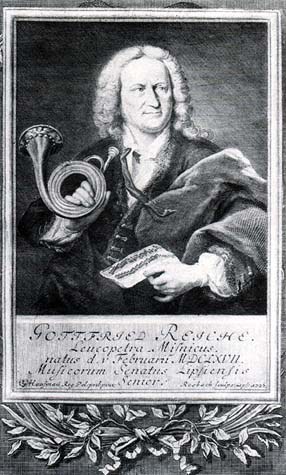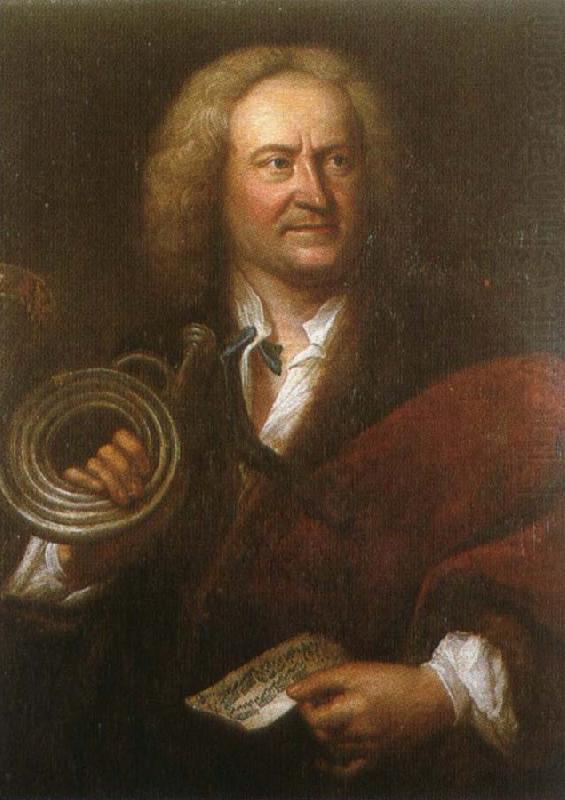This week’s theme is…More Syndication! Enjoy some more of my favorite episodes in rerun 🙂
More Syndication, Day 1 – Ablassen by Gottfried Reiche

Here’s a crisp little number to get you going:
Great singing by Natalie Dessay, tight string playing by l’Concert d’Astree, and terrific trumpeting by Neil Brough in the outer sections. It’s the peppy opening movement from Bach’s Cantata 51, and here’s what she is singing:
“Exult in God in every land!
Whatever creatures are contained
by heaven and earth
must raise up this praise,
and now we shall likewise
bring an offering to our God,
since He has stood with us
at all times during suffering and necessity.”
It has a very certain character, doesn’t it? While you will find trumpet parts in every single one of Beethoven’s nine symphonies (though not, perhaps in every single movement), it is something of a rarity to find them in music by Bach. Of the 250 or so cantatas Bach wrote during his time in Leipzig, a mere handful, probably less than 10, feature trumpet parts. Of the 6 very colorful concertos known as the Brandenburgs – I’m sure you’ve heard at least one of them, probably this one…
…only the second concerto features a part for trumpet. In short, Bach didn’t apply the trumpet all that often, only in very special conditions, conditions in which it was just the right affective tool.
Affect, or the German version affekt, refers to the way music makes you feel. Music has long been renowned for its mysterious ability to transform the psychic states of its listeners, especially given its elusive and invisible nature. Surely you’ve noticed this. The next time you hear music, any music at all, sit back and notice the effect it exerts on your state. Does it make you more content? Enraged? Peaceful? Animated? Depressed? While we can often relate to the feelings of the subjects we see in painting and drama, it is only music that can change the feelings of its audience to the degree that it does. During the time that Bach was working, musicians developed highly rigorous and systematized theories and practical guidelines about how to wield the affects of the music they created. One common and pervasive guideline was that musical movements should be brief and completely unified in the primary affect they communicated. For this reason, you will rarely find individual movements from Bach, Handel, Vivaldi, or their contemporaries, that exceed five minutes in length, and many are even shorter. In addition to that, the feeling of the movement will be more or less the same from beginning to end. Some movements are longer, but they tend to feature multiple sections with different, contrasting feelings.
Orchestration, too, was subject to the guidelines of affective practice in Baroque music. Imagine a trumpet. Would you use it to produce a calm, peaceful feeling? Probably not. How about sad or pathetic? Again, probably not the first choice. I would probaby opt for a flute to illustrate that. But how about haughty, strong or confident? That’s perfect for a trumpet, isn’t it? Well, Bach would have agreed with you, and the movements in which he employed the trumpet tended to illustrate strong, extroverted feelings like pride, confidence and celebration. Read the text from Cantata 51 again, and you can see that the trumpet fits that bill.
Whenever Bach had a trumpet part to blare he relied on an extraordinary bugler named Gottfried Reiche, about 20 years Bach’s senior, who had also settled in Leipzig. He hailed from a smaller town just a few kilometers southwest of Leipzig, Weißenfels, a veritable trumpeter factory. Reiche became Leipzig’s Stadtpfeifer, “town piper”, and kept busy providing music for all the civic and religious events in the town. The town piper was a municipal position, which guaranteed an income provided the piper was willing to play whatever was necessary whenever it was necessary, and this required them to keep up with all the latest sacred and social music trends, as well as to accept apprentices and, or course, to stay sharp. I suspect that Reiche, a most accomplished piper, was one of the few musical equals Bach ever found, judginging by the florid and virtuosic nature of the trumpet parts he wrote. Reich was Bach’s first choice to realize all his first trumpet parts.
One peculiar kind of concert that German town pipers sometimes gave involved what was called turmmusik, or “tower music”. This was anything written to be performed, usually by wind and brass bands, by broadcasting from the tower of a church or town hall. When I visited Munich a little more than ten years ago I ascended one such tower on St. Peter’s Church in Munich:

The view was spectacular and I’m sure it would create a still more spectacular atmosphere to hear a choir of brass piping from above. Take a look at this, the most famous portrait of Gottfried Reiche:

Do you see the notation he is holding? It is thought to be a fanfare, and a piece of tower music. You may have heard it before in association with a certain television show. Here is its debut episode:
Did you ever watch CBS Sunday morning? My parents sometimes did as I was growing up and its pervasive sunrise imagery made a strong impression on me. The opening sequence is so centering and optimistic, and Reiche’s fanfare provides a most uplifting aural counterpoint to the bright, florid imagery, just as it must have done to greet sunrises or announce events from the spires of Leipzig in the early 1700s.
Reiche is said to have died shortly after playing Bach, specifically this cantata:
He collapsed while walking home the night following a performance and is thought to have had a stroke, perhaps from blowing so hard on the natural horn on which he would have played those trumpet parts (the valved models prevalent today were still a century away).
Most of his music is lost, but this particular ablassen is preserved, largely due to the great painting. It is called an ablassen, which means “exhalation”, indicating that it was meant to be played entirely in one breath. What a piper Reiche must have been! It’s a little like an eighteenth century bugle tune, isn’t it? Like the kind of thing you would hear an army bugler play, but florid with Baroque scales and sequential figuration. What’s really astounding is that Reich would have played that on a natural trumpet, not much different than a bugle, navigating entirely from overtone to overtone with just his embouchure.
This ablassen is just a molecule of musical life in Leipzig. While we know the heavier elements that were Bach’s great works, we often miss the full context in which those would have existed. Reiche must have produced countless of these little pieces, all with pleasing the structure, shape, and proportion of this one, a brilliant way to fill a fraction of a minute. Bach would have heard these in the morning, resounding from the towers of Leipzig.
—
Would you like Aaron of Smart and Soulful Music to provide customized program notes especially for your next performance? Super! Just click here to get started.
Want to listen to the entire playlist for this week and other weeks? Check out the Smart and Soulful YouTube Channel for weekly playlists!
Do you have feedback for me? I’d love to hear it! E-mail me at smartandsoulful@gmail.com
Do you have a comment to add to the discussion? Please leave one below and share your voice!
Subscribe to Smart and Soulful on Facebook and Twitter so you never miss a post!

